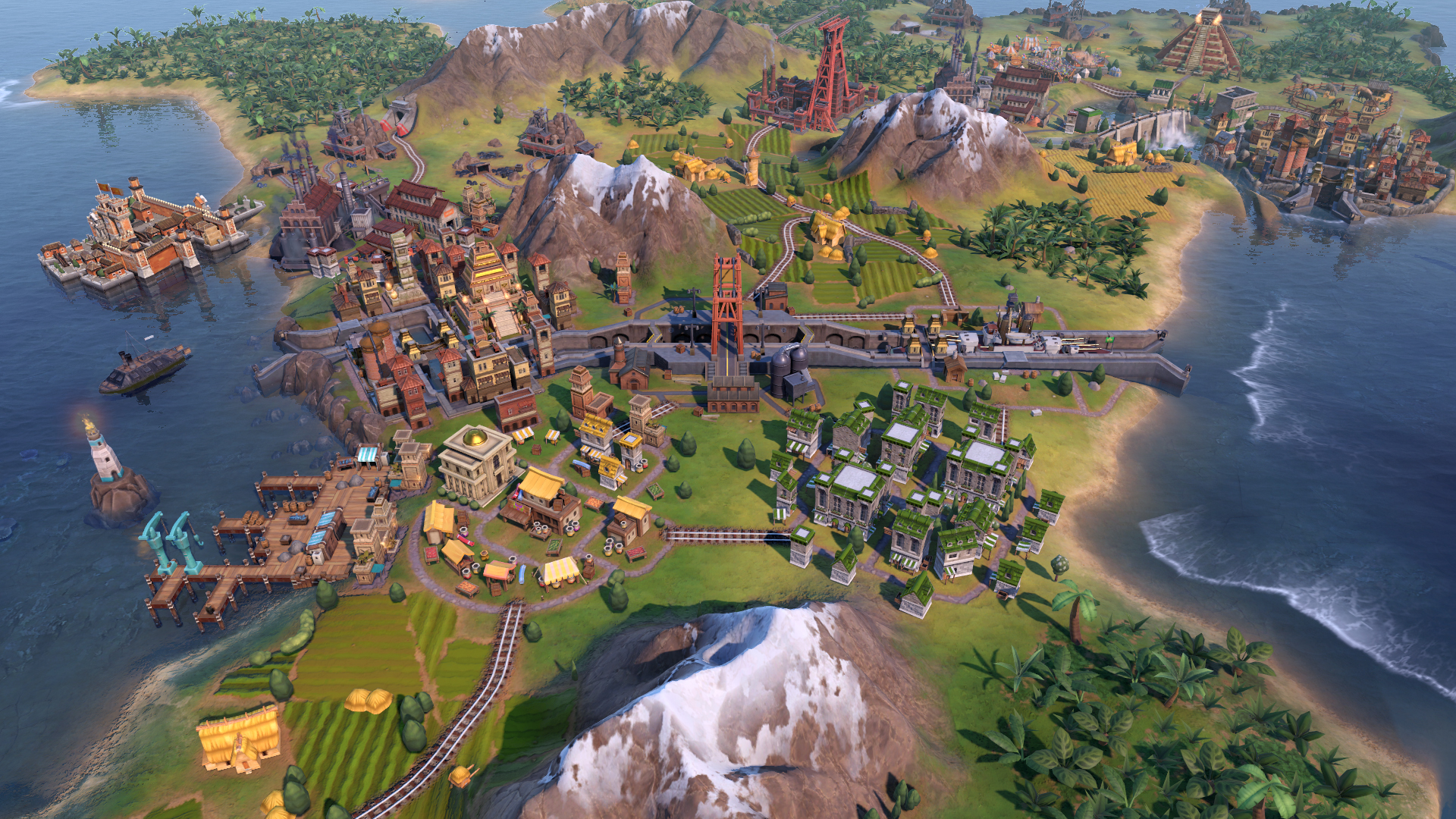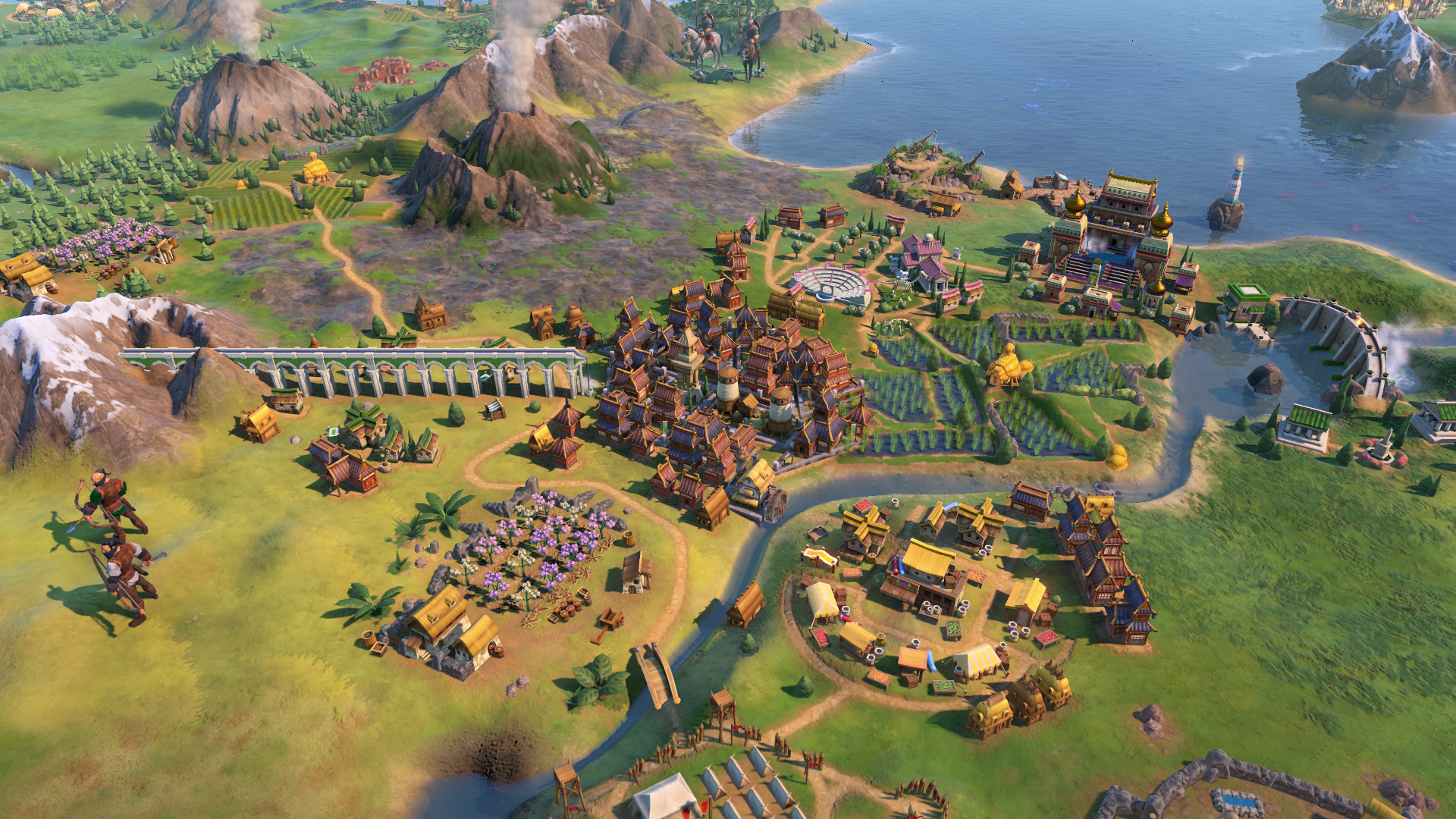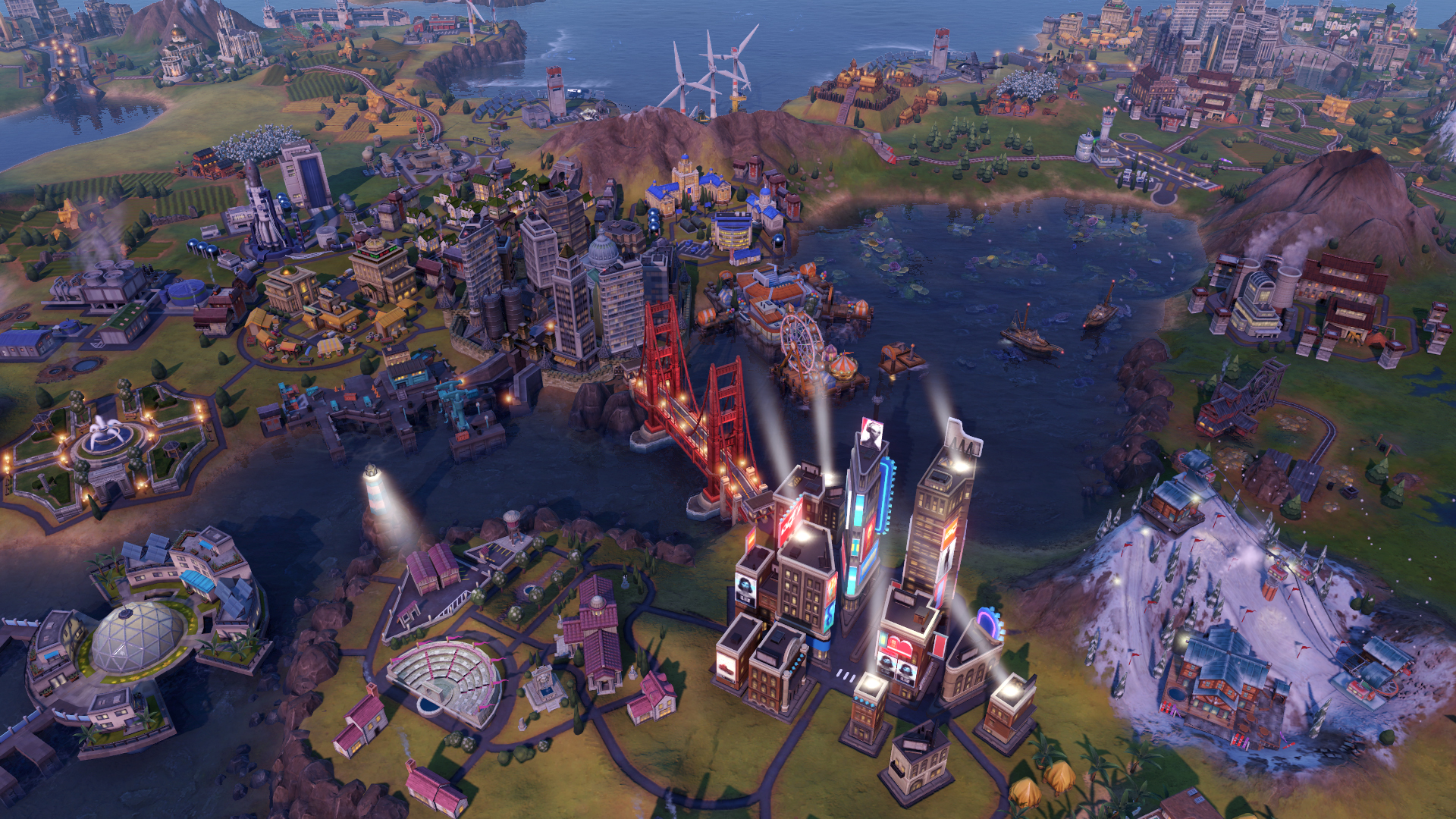Civilization 6: Gathering Storm, has been announced as the game's second expansion. Following the central theme of “Man vs Environment,” it will require your civilization to deal with issues of climate change in the late game, when industrialization can lead to rising sea levels and the loss of entire city districts. Along the way, you'll encounter river floods, blizzards, droughts, volcanic eruptions, and other natural disasters that can provide risks and rewards. We’re also seeing a return of the World Congress and diplomatic victory.
Climate change will shake up the late game
All rivers will now flood semi-randomly, potentially damaging constructions on their banks but leaving behind fertile soil.
The most intriguing new feature is a dynamic climate system that will track the amount of carbon that has been added to the atmosphere by all civs on a map. This won’t be a major factor until around the industrial age, when the first factories start popping up. Buildings and districts that use coal and oil for power increase carbon levels, and removing forest and rainforest tiles can speed up this effect. Left unchecked, it will eventually lead to melting ice caps and rising sea levels. The severity of other semi-randomized disasters like blizzards and floods (more on that below) will increase as well.
While you can’t outright lose city centers from sea level change, they can be put in “a world of hurt,” as franchise lead designer Ed Beach put it. The initial stages will simply cause coastal tiles to become temporarily flooded, damaging anything built on them and preventing construction. But eventually, they can become permanently submerged, including the loss of any non-city-center districts they contain. There are three phases of sea level rise that can play out gradually as carbon emissions increase, meaning you’ll have time to take steps to prevent things from getting worse once climate change is in motion.
You aren’t utterly powerless to defend against such a catastrophe, however. Technology will eventually unlock the ability to build sea walls that can prevent further flooding. It’s not a perfect solution, as the cost to maintain these barriers will increase up to potentially crippling levels the higher the sea level rises and the more tiles you’re trying to protect. Planting new growth forests and researching late game techs like carbon capture can also help slow down or reverse the effects of climate change.

Post-industrial cities need power
This expansion also introduces the concepts of power and consumable resources, going hand-in-hand with its ecological themes. Buildings like factories can now be powered or unpowered, providing severely decreased production yields if they’re not getting the juice they need. Coal and oil will be the cheapest and easiest resources to use for power in the early industrial era, but it’s also now possible to deplete them permanently. Later-game techs introduce renewable sources of power to make up for this. I asked senior producer Dennis Shirk if it was viable to play an entire game of Civ without ever using carbon-burning buildings, to which he responded, “You totally could.”
Natural disasters bring risks and rewards
Long before you have to start worrying about carbon emissions and rising sea levels, however, the map is going to throw some other reminders of nature’s fury your way. All rivers on the map will now flood semi-randomly, potentially damaging constructions on their banks but leaving behind fertile soil that will increase agricultural yields. Volcanoes can erupt and scorch adjacent land, but also create similarly rich deposits. There will also be blizzards, storms, droughts, and coastal floods to deal with. Each will provide some kind of potential reward to compensate for the risk of building in a danger zone.
Some new and existing civs will be getting unique ways to take advantage of these events. For example, Egypt’s bonuses will now reflect their unique talent for making the best of regular river flooding. Enemy troops that get caught in a blizzard on Russian territory will now suffer increased attrition while you sit back and wonder why no one ever heeds the warnings about invading your country during winter. Many other civs, as well as governors from Rise and Fall, have been rebalanced or retooled to take advantage of the new mechanics.
The biggest gaming news, reviews and hardware deals
Keep up to date with the most important stories and the best deals, as picked by the PC Gamer team.

The World Congress and Diplomatic Victory return
The World Congress is also making a comeback, along with the diplomatic victory condition. Players will now have a lot more control over building resolutions from different components the way you might a peace treaty, rather than picking from a set menu. Emergencies from Rise and Fall, rather than triggering automatically, will now call an emergency session of the World Congress at which the international community can vote on whether or not to act collectively (and you, if you’re the reason the emergency got called, can potentially sweep the whole thing under the rug).
Diplomatic victory will no longer be so simple as winning a vote to be proclaimed leader of the free world like in past Civs. Rather, you will need to accrue a certain number of Diplomatic Victory Points. One way to earn these is to bring forth a resolution to the World Congress and get everyone to vote them to you — though rivals can also try to push through a resolution to take your existing points away. There are also some special ways to earn them, such as in the late game when the Climate Accords resolution becomes available. Once passed, it will trigger a race to see who can shrink their carbon footprint the most, with the winner getting a victory point.
Influencing these votes will use a new resource called Favor that can be generated by high-level alliances, keeping promises to other civs, and being the suzerain of one or more city-states. Everyone’s vote in the World Congress counts roughly equal by default, but spending Favor can increase the weight of your vote. It becomes increasingly costly the more you try to tip the scales, with one extra vote being relatively inexpensive but each one after that costing more than the last.

Bits and pieces
There are tons of other smaller changes on the way, like an expansion of the espionage system (including the ability to blow up dams your rivals have built to protect against flooding), updates to trade routes that increase their yields if you have a continuous route by sea or rail to the destination, and a new Future era for tech and civics in which the order of unlocking each advancement is randomized at the beginning of a game. Geographical features like rivers, volcanoes, deserts, and mountains will now have visible names generated based on the first civ to discover them. We’re also getting eight new civs and nine new leaders which Firaxis isn’t ready to talk about just yet.
Civilization 6: Gathering Storm is set to release February 14, 2019.
Len Hafer is a freelancer and lifelong PC gamer with a specialty in strategy, RPGs, horror, and survival games. A chance encounter with Warcraft 2: Tides of Darkness changed her life forever. Today, her favorites include the grand strategy games from Paradox Interactive like Crusader Kings and Europa Universalis, and thought-provoking, story-rich RPGs like Persona 5 and Disco Elysium. She also loves history, hiking in the mountains of Colorado, and heavy metal music.

